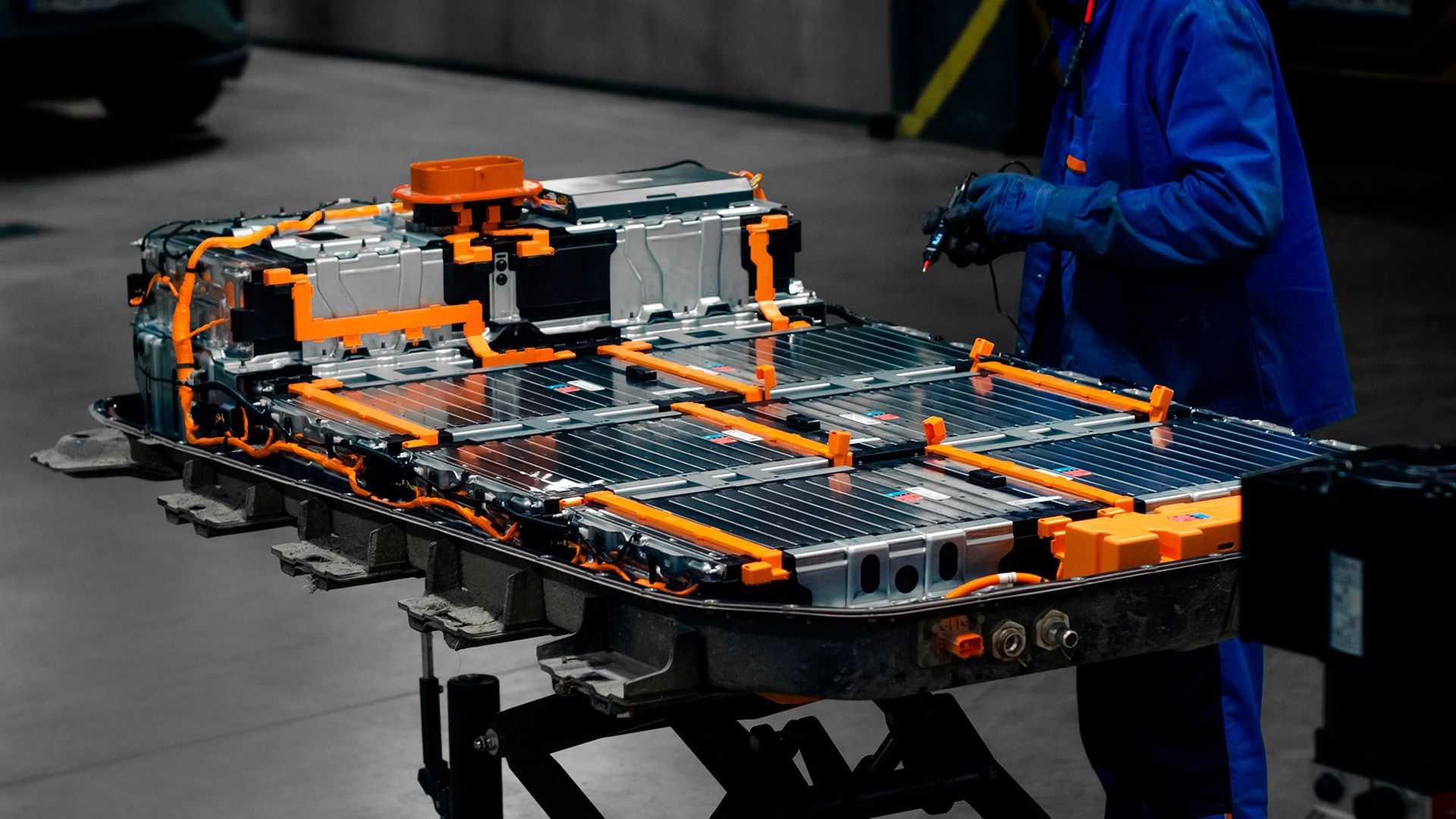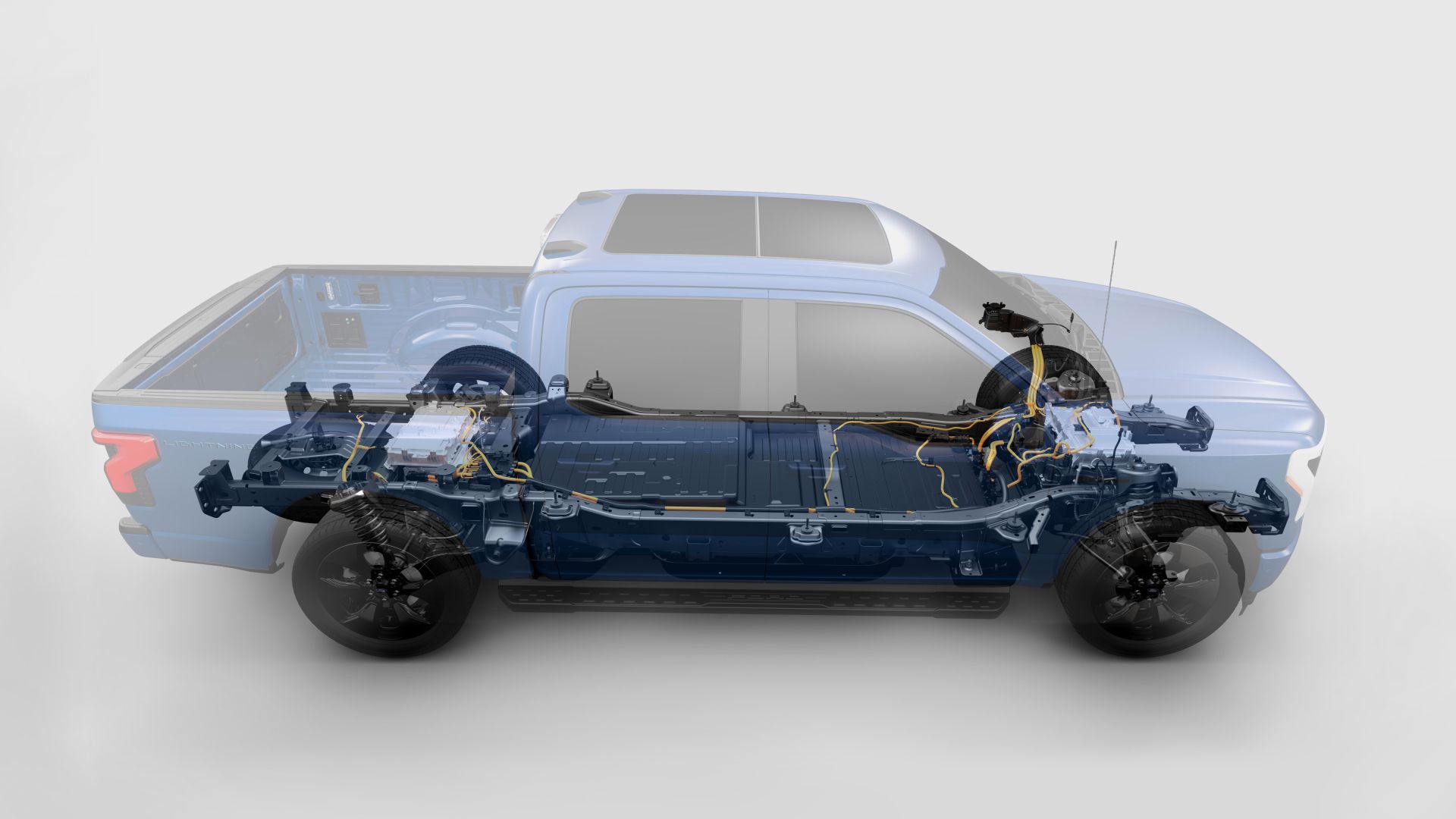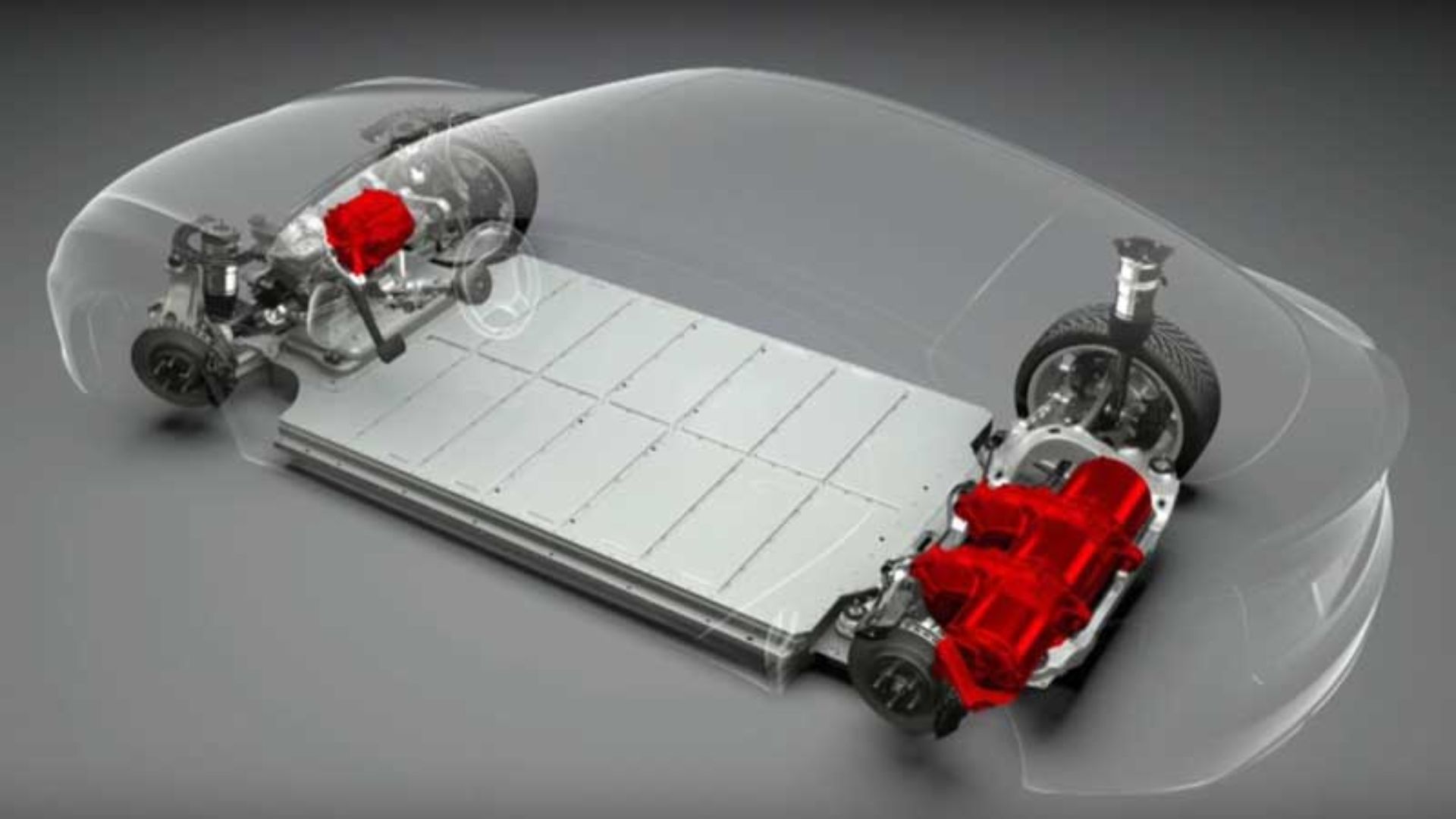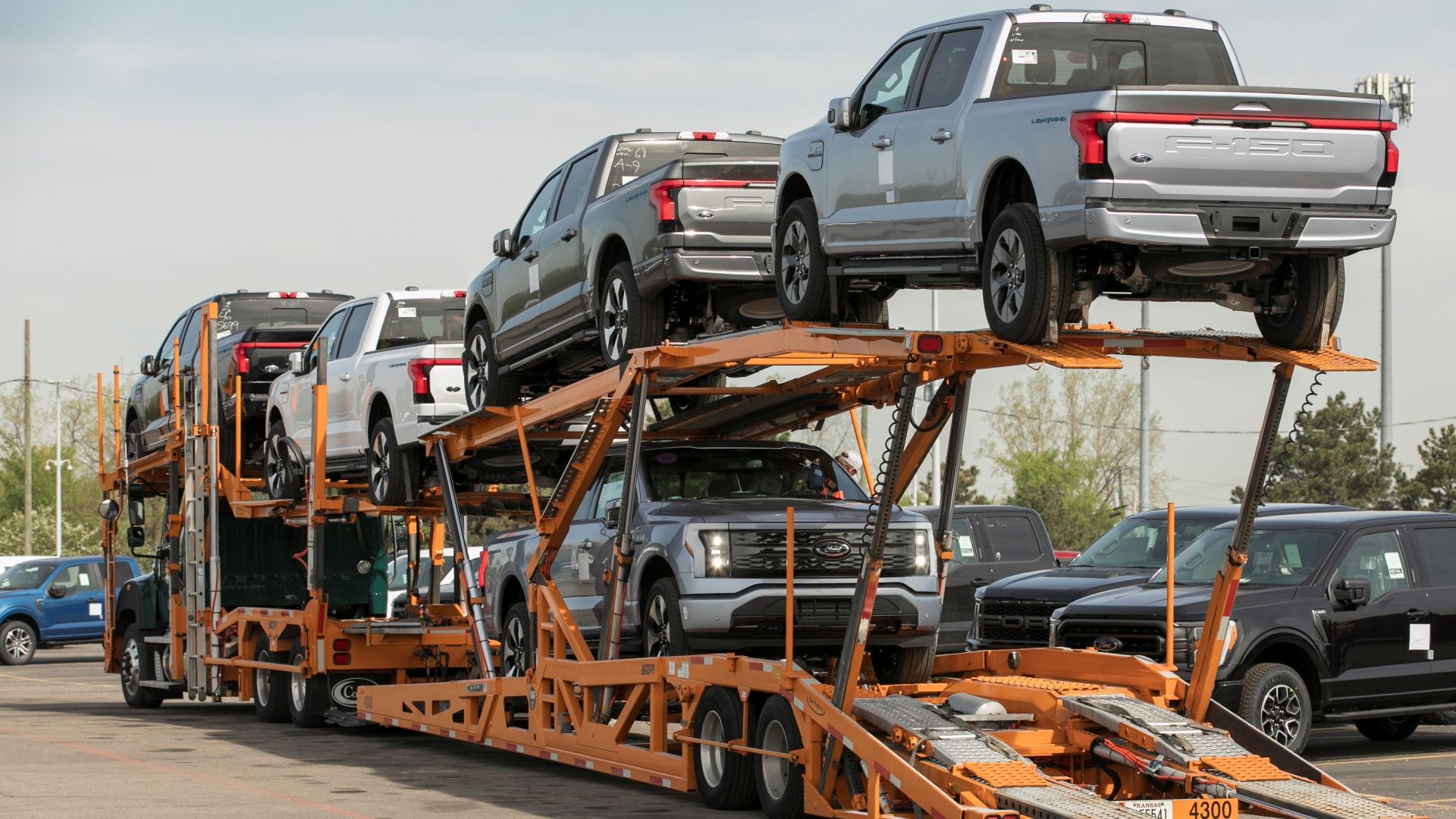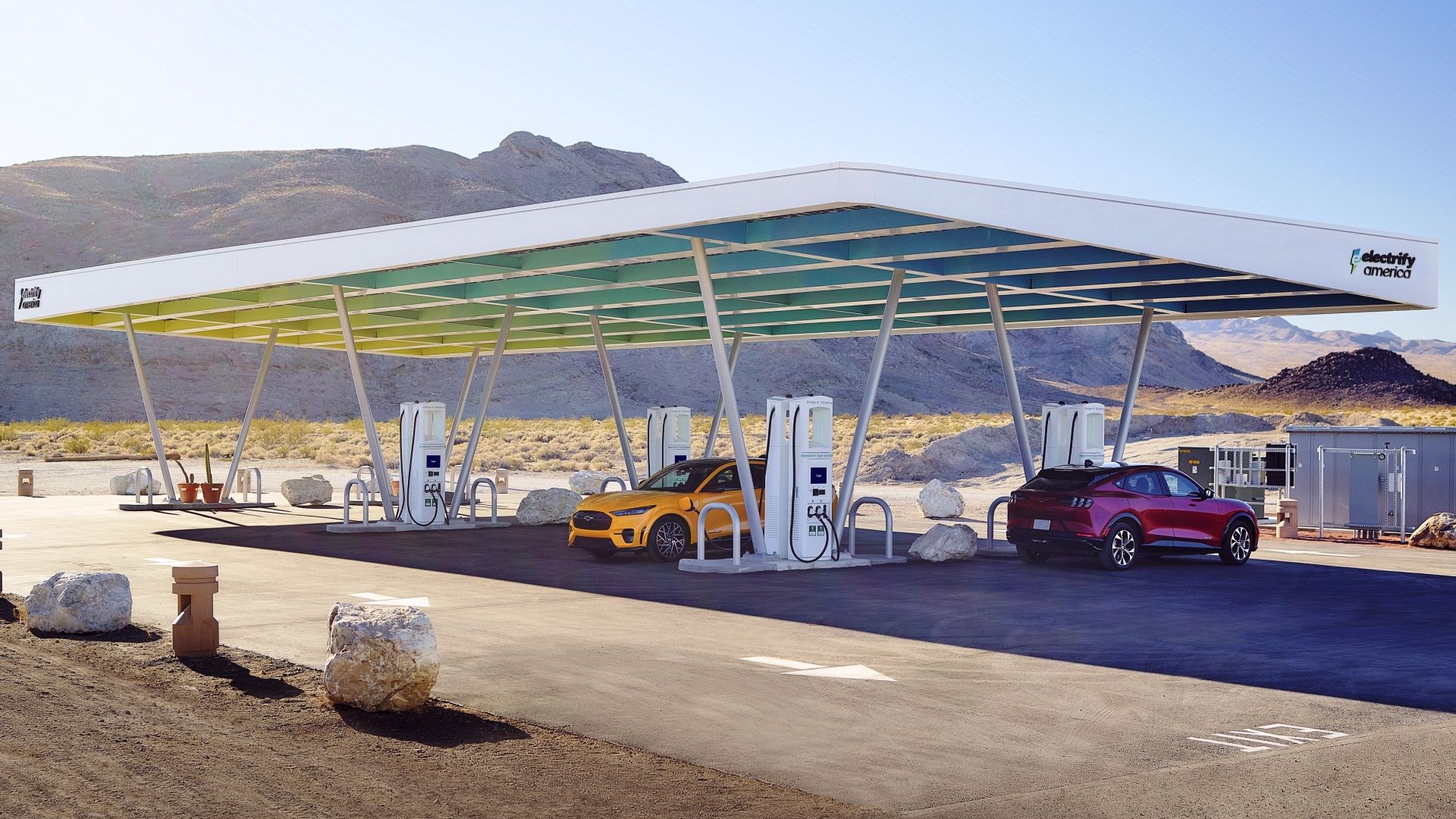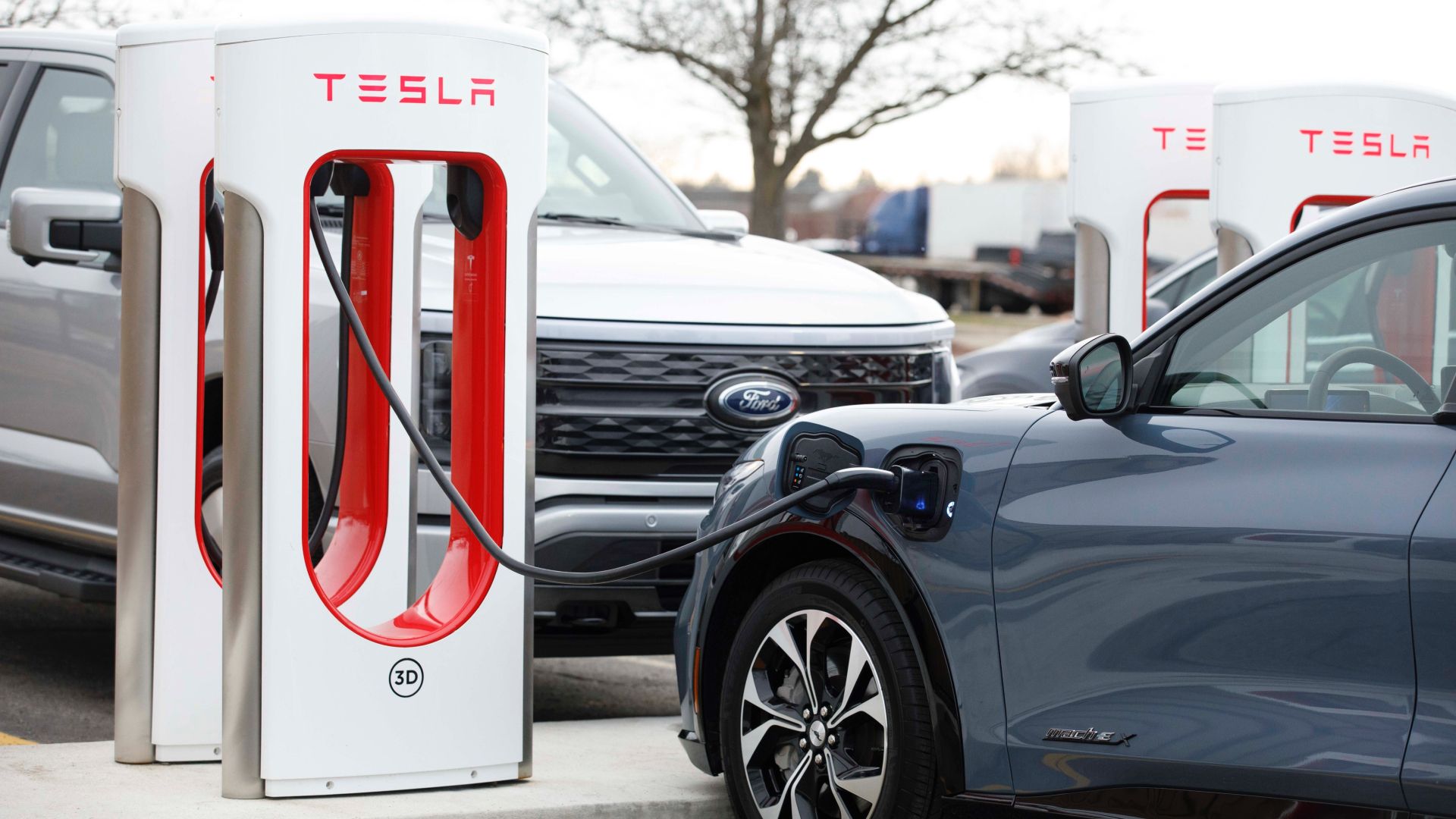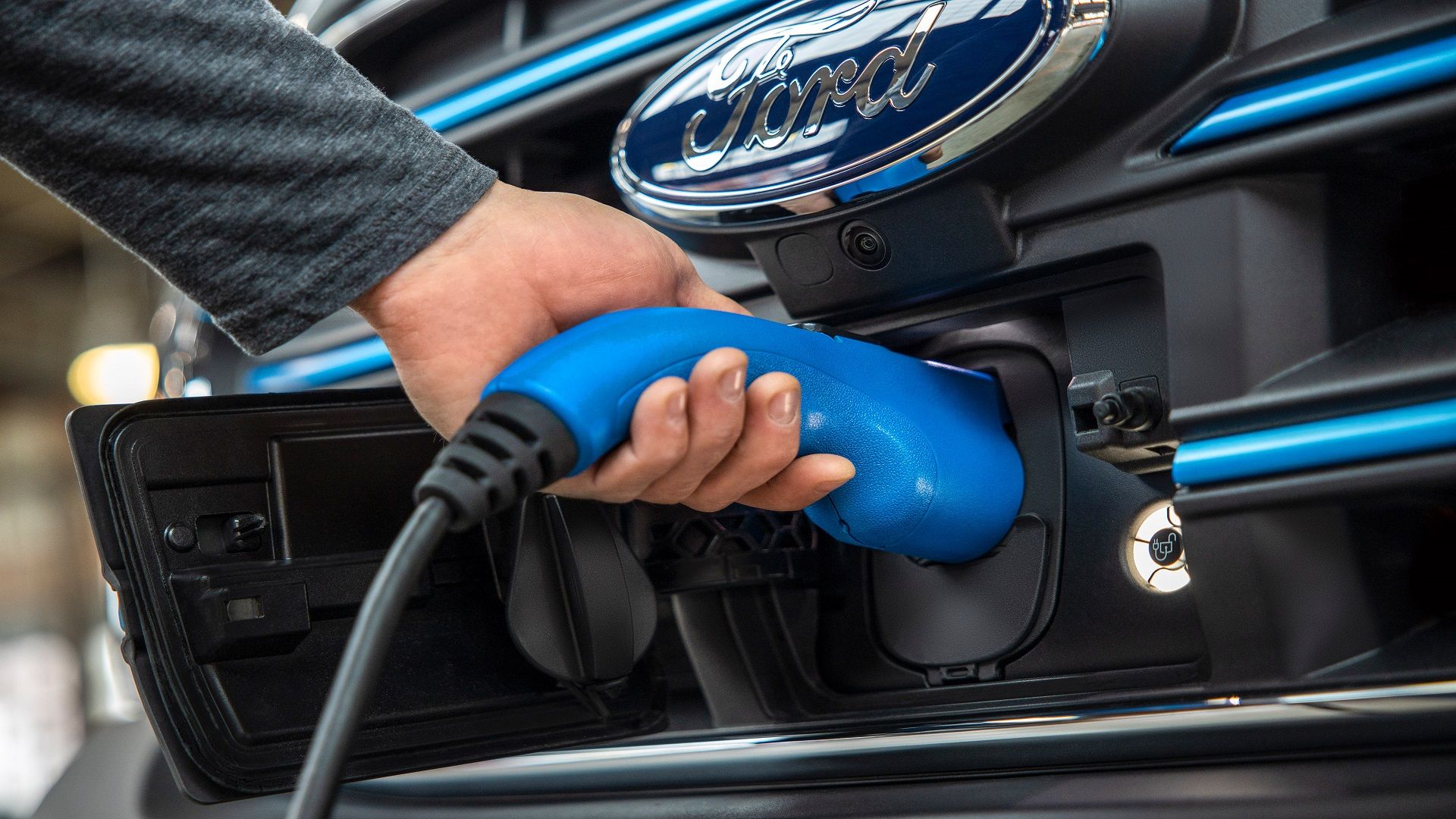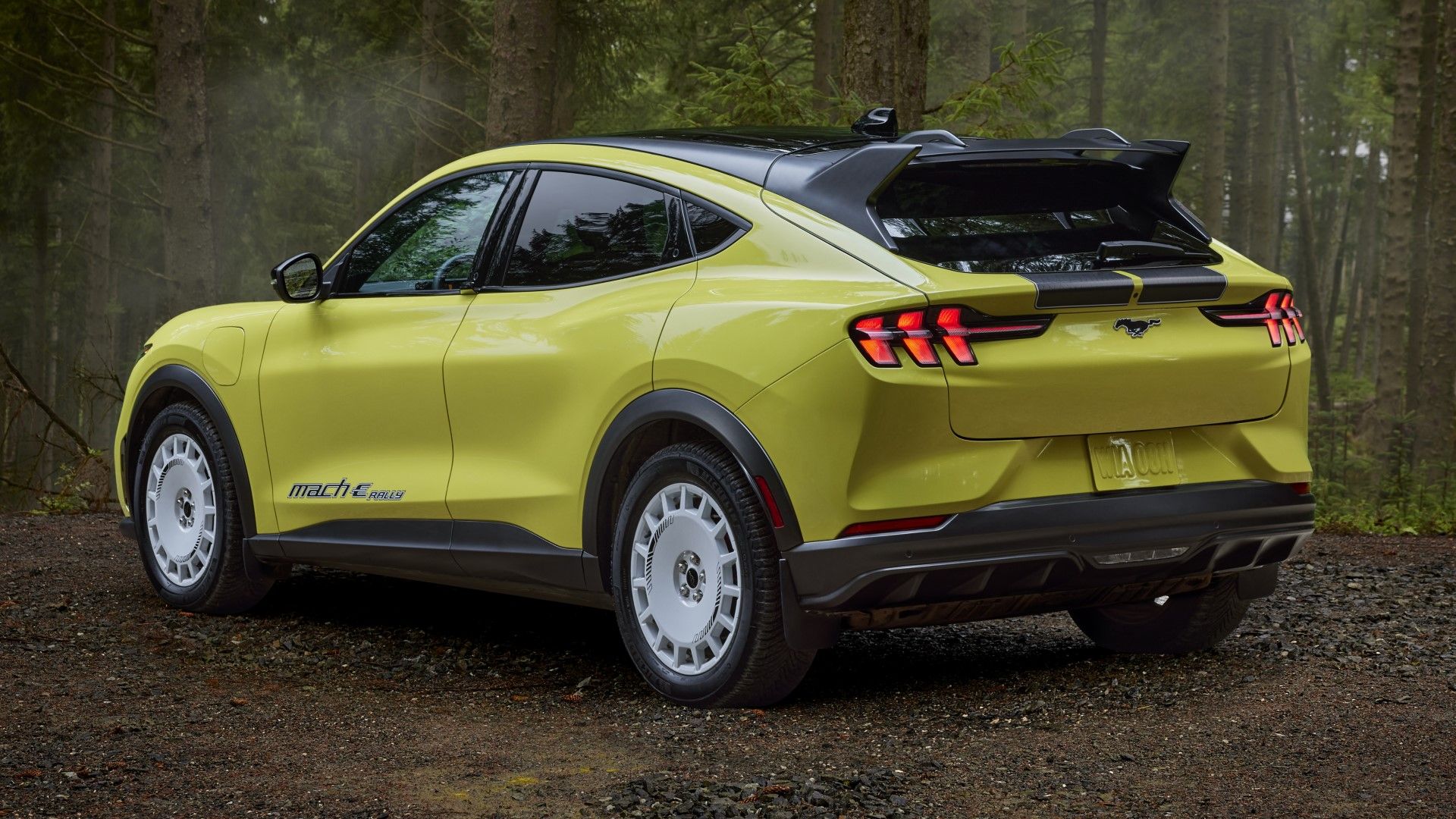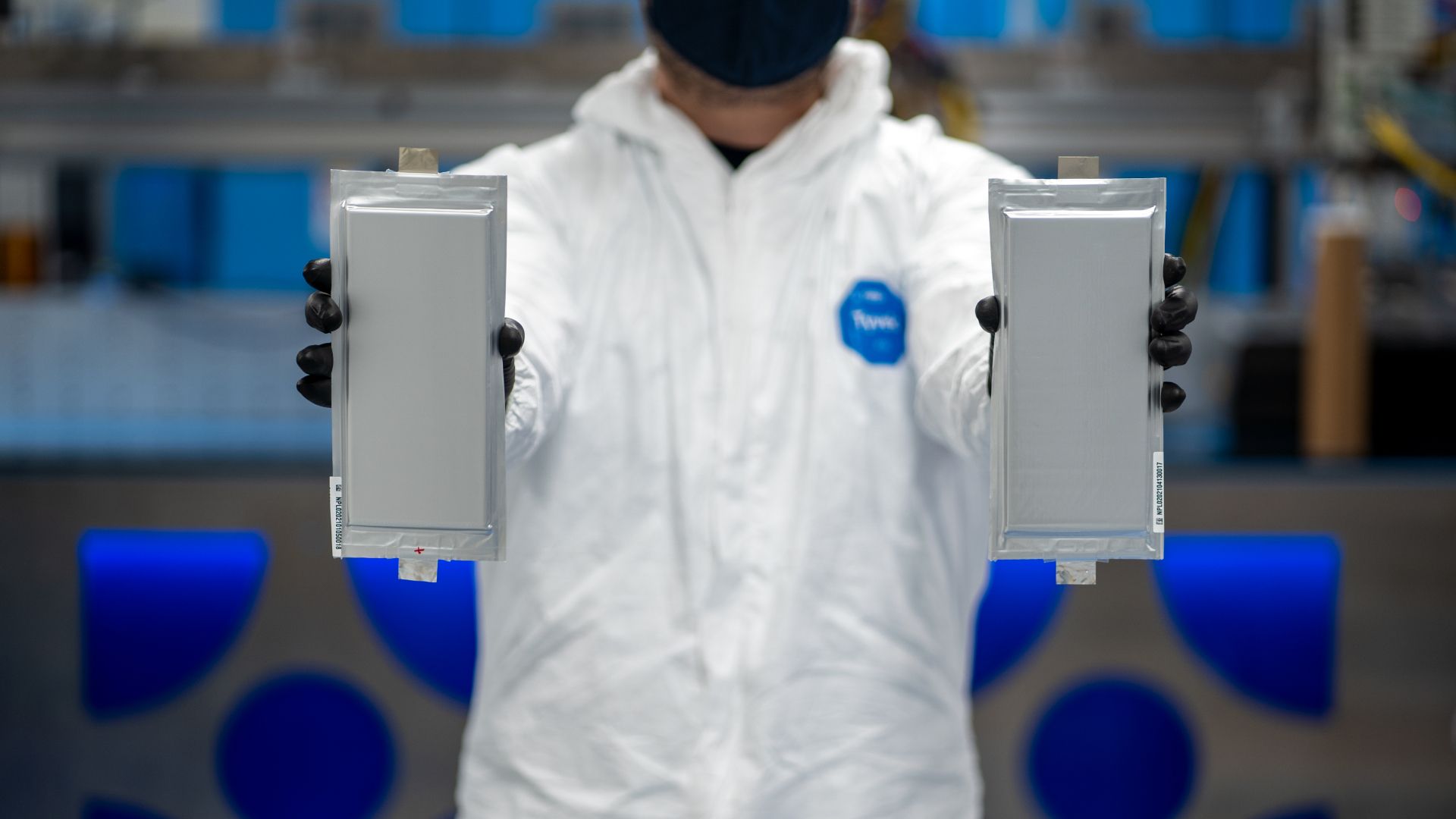[ad_1]
Ford’s current electric car catalog is relatively short and young, but those who own its Mustang Mach-E, F-150 Lightning, or the E-Transit do need to consider an eventual battery replacement. This can be an issue if the battery pack has sustained damage or has reached the end of its life cycle, which can generally take place between eight and 10 years. Electric car battery replacement is currently unavoidable in long-term EV ownership.
EVs rely on these large battery packs to power their electric motors as well as other car functions. Modern lithium-ion chemistries last a lot longer than conventional nickel hydrate packs, but they are still subject to replacement after extensive use. Charging habits, total mileage covered, and environmental conditions influence battery degradation. The F-150 Lightning and the E-Transit, in particular, cater to hard-working owners who need to make full use of towing and payload abilities. This will no doubt speed up the battery’s wear and tear.
Replacing a Ford’s EV battery is more complex and costly than changing a regular car battery. Removing the old pack and installing a new one requires specialized skills and equipment, often resulting in costs that can run into thousands of dollars if the vehicle warranty does not cover it. These costs and labor times are bound to decrease as Ford heavily invests in new technologies and innovations. The company is also exploring battery refurbishment or modular replacements as more economical and sustainable options.
UPDATE: 2024/04/19 16:00 EST BY ANIEBIET INYANG NTUI
This article has been significantly expanded to provide a more comprehensive picture of Ford EV battery ownership based on the latest available information.
In order to give you the most up-to-date and accurate information possible, the data used to compile this article was sourced from the manufacturer’s website and other authoritative sources such as CarBuzz, HotCars and Reuters.
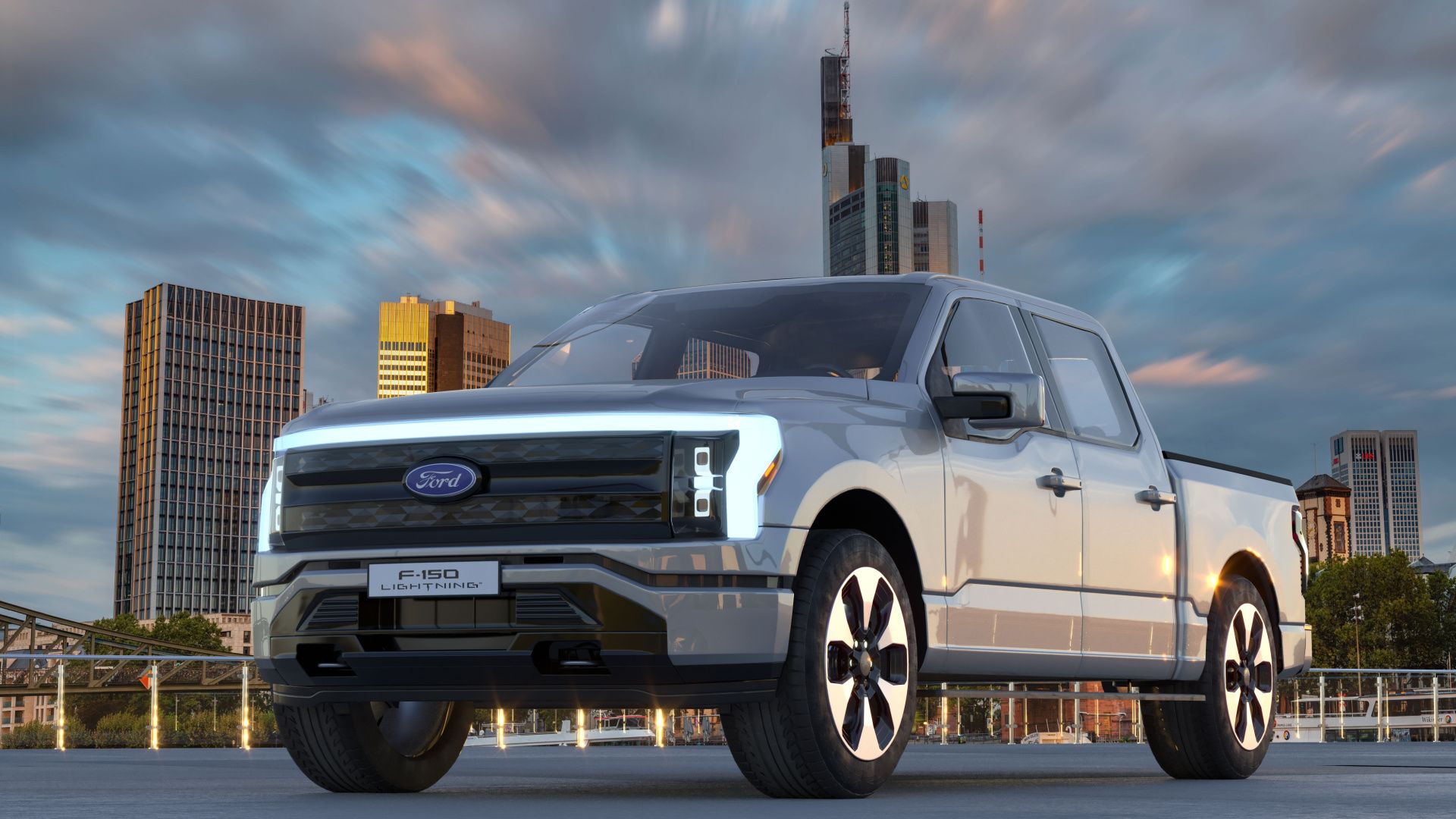
2024 Ford F-150 Lightning: A Comprehensive Guide On Features, Specs, And Pricing
Here’s everything you need to know about the all-electric Ford F-150 Lightning so you can decide if it’s the right full-size pickup truck for you.
The Cost Of Ford Battery Replacement Varies By Size And Composition
The average cost range for replacing a Ford EV battery varies, depending on the model and battery specification. Most Ford EV owners who have had batteries replaced due to damages or malfunctions have paid a core charge of between $5,000 and $15,000 for a full battery replacement. This range accounts for differences in battery capacity and technology between the Mustang Mach-E and the Ford F-150 Lightning model lines. Ford’s official parts catalog for the F-150 Lightning shows that the standard range battery costs $28,556 while the extended pack will set you back $35,960. This excludes any labor costs.
The Lightning’s battery system is split into eight modules, each of which costs around $4,000 MSRP, excluding labor. The Mustang Mach-E battery part will cost up to $35,329 before the aforementioned core charge. According to Lakeland Ford’s parts catalog, the Battery Pack for the E-Transit has a starting price of $35,824.23.
Keep in mind that both the parts and labor charges influence these costs, and they vary based on the service provider and location. It’s also worth keeping in mind that advancements in battery technology and increased production scale may lead to a decrease in these costs by the time a well-maintained Ford EV’s battery reaches the end of its life.
Ford’s warranty on EV batteries will significantly reduce the financial burden for owners if the replacement falls within the warranty period. Ford says that it is researching and investing in cost-cutting endeavors to lower EV pricing throughout each car’s life cycle, including repairs and parts.
Ford EV Battery Specifications
|
Mustang Mach E |
F-150 Lightning |
E-Transit |
|
|
Battery Capacity |
72-91 kWh |
98-131 kWh |
68 kWh |
|
Combined Energy Consumption |
82-103 MPGe |
66-70 MPGe |
Not available |
|
Range |
224-312 miles |
240-320 miles |
126-217 miles |
(Specs sourced from Ford)
Ford EV Battery Replacement Labor Costs
You’ll find that labor will take up the bulk of the battery replacement cost because it is a time-consuming task that demands specialized skills and equipment. Technicians must safely remove the large and heavy old battery and install the new one. After that, they need to ensure all connections and systems integrate correctly with the vehicle’s sophisticated electrical and software system.
The exact cost of labor can vary depending on the car that’s being worked on, the service provider, and the location. Dealerships will charge more due to their expertise and the use of original equipment and manufacturer-approved parts. Independent service providers and workshops charge lower rates, but you run the risk of having an inexperienced tech with limited knowledge of Ford’s EVs working on your car.
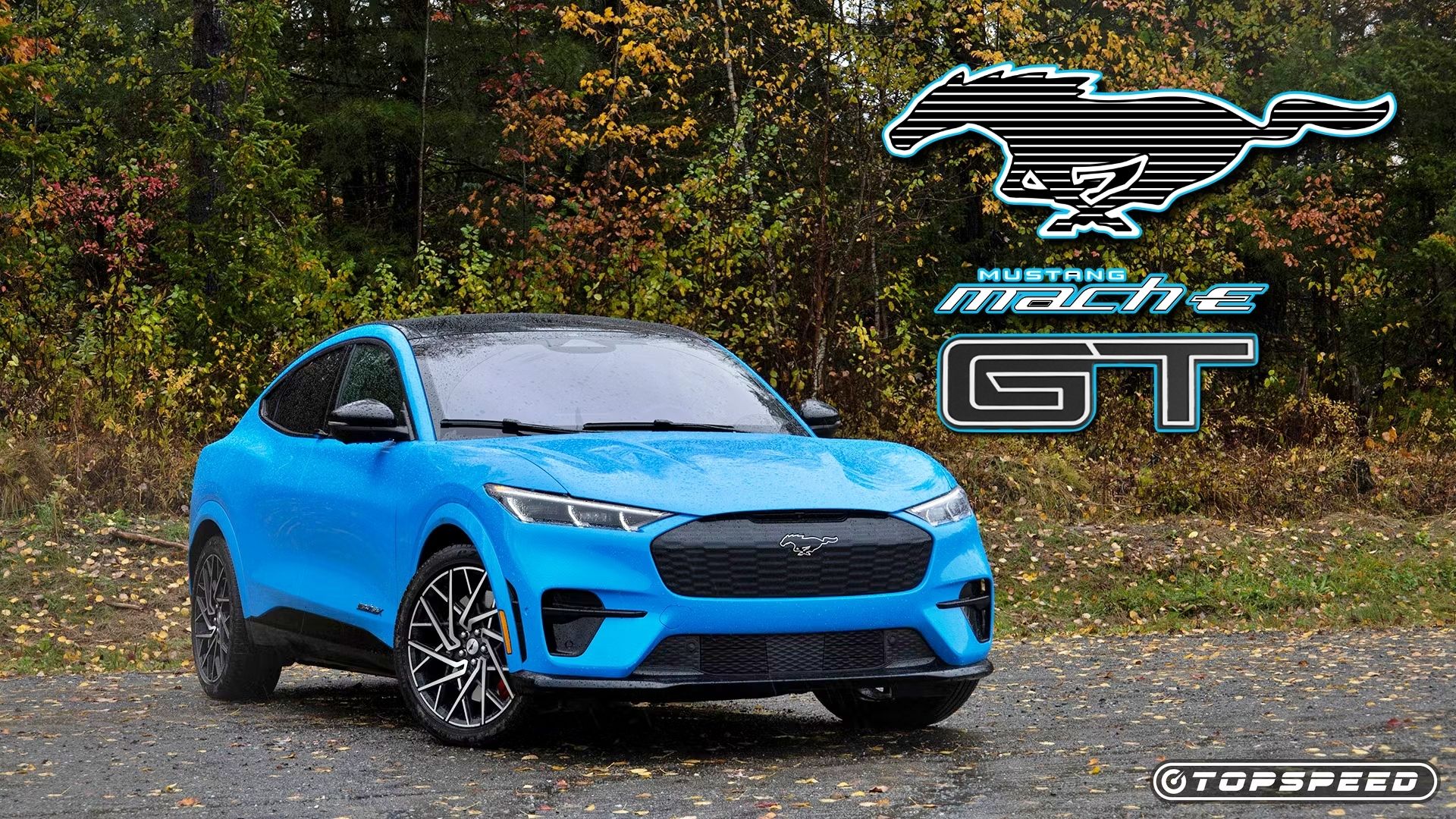
2024 Ford Mustang Mach-E: A Comprehensive Guide On Features, Specs, And Pricing
This is everything you need to know about the all-electric 2024 Ford Mustang Mach-E range.
Warranty Coverage’s Impact On Battery Replacement Cost
It’s in your best interest to thoroughly understand the manufacturer’s warranty coverage because it plays a crucial role in mitigating the cost of replacement parts. Considering the high expense of EV batteries, this holds even more true for EV ownership, particularly for Ford’s new electric cars. Its standard warranty covers eight years or 100,000 miles and protects the entire system against manufacturing defects and excessive loss of battery capacity. This coverage will save you thousands of dollars in the event of any unintentional failure.
- Ford’s EV battery warranty typically covers eight years or 100,000 miles, whichever comes first.
- The warranty guarantees a certain level of battery capacity retention, often around 70 percent of the original capacity.
- It includes coverage against manufacturing defects and excessive loss of battery capacity.
- The warranty is usually transferable to subsequent owners, adding value to the vehicle on the resale market.
- If the battery falls below the specified capacity threshold or has defects, repairs or replacements are covered at no cost to the owner.
- The warranty may have specific limitations or exclusions, such as damage due to accidents, misuse, or unauthorized modifications.
New battery packs can fall below a certain capacity threshold or encounter performance issues within the warranty period. In this case, Ford will cover the replacement or repair costs. Warranty coverage provides significant financial relief and instills confidence in the longevity and reliability of your EV. Again, it is crucial to understand the specifics of a warranty because you need to consider a lot of what’s in the fine print. The company’s terms can vary based on the model and year of the vehicle. Comprehensive warranty coverage is a key factor in the overall cost-effectiveness and maintenance of Ford EVs.
Ford’s warranty on EV batteries significantly reduces this financial burden, so long as you complete the job within the warranty period. Battery prices have been gradually decreasing over the years, thanks to advancements in technology, chemistry, and increased production scale. Tightening up the supply chain has also had a monumental effect on costs. Ford is also committed to electrification, with the promise that future models will have more cost-effective and efficient battery solutions.
Ford EVs Warranty Details
|
Mustang Mach-E |
F-150 Lightning |
E-Transit |
|
|
Full Warranty |
36 Months/36,000 Miles |
36 Months/36,000 Miles |
36 Months/36,000 Miles |
|
Powertrain Warranty |
60 Months/60,000 Miles |
60 Months/60,000 Miles |
60 Months/60,000 Miles |
|
Electric Vehicle Component Warranty |
8 Years/100,000 Miles |
96 Months/100,000 Miles |
N/A |
|
Maintenance Warranty |
0 Months/0 Miles |
N/A |
0 Months/0 Miles |
|
Roadside Warranty |
60 Months/60,000 Miles |
60 Months/60,000 Miles |
60 Months/60,000 Miles |
|
Corrosion Warranty |
36 Months/36,000 Miles |
60 Months/Unlimited Miles |
60 Months/Unlimited Miles |
|
Federal Emissions Performance |
24 Months/24,000 Miles |
N/A |
24 Months/24,000 Miles |
|
Federal Emissions Defect |
36 Months/36,000 Miles |
N/A |
36 Months/36,000 Miles |
|
Seat Belt And Airbags |
60 Months/60,000 Miles |
60 Months/60,000 Miles |
60 Months/60,000 Miles |
(Specs sourced from Ford)
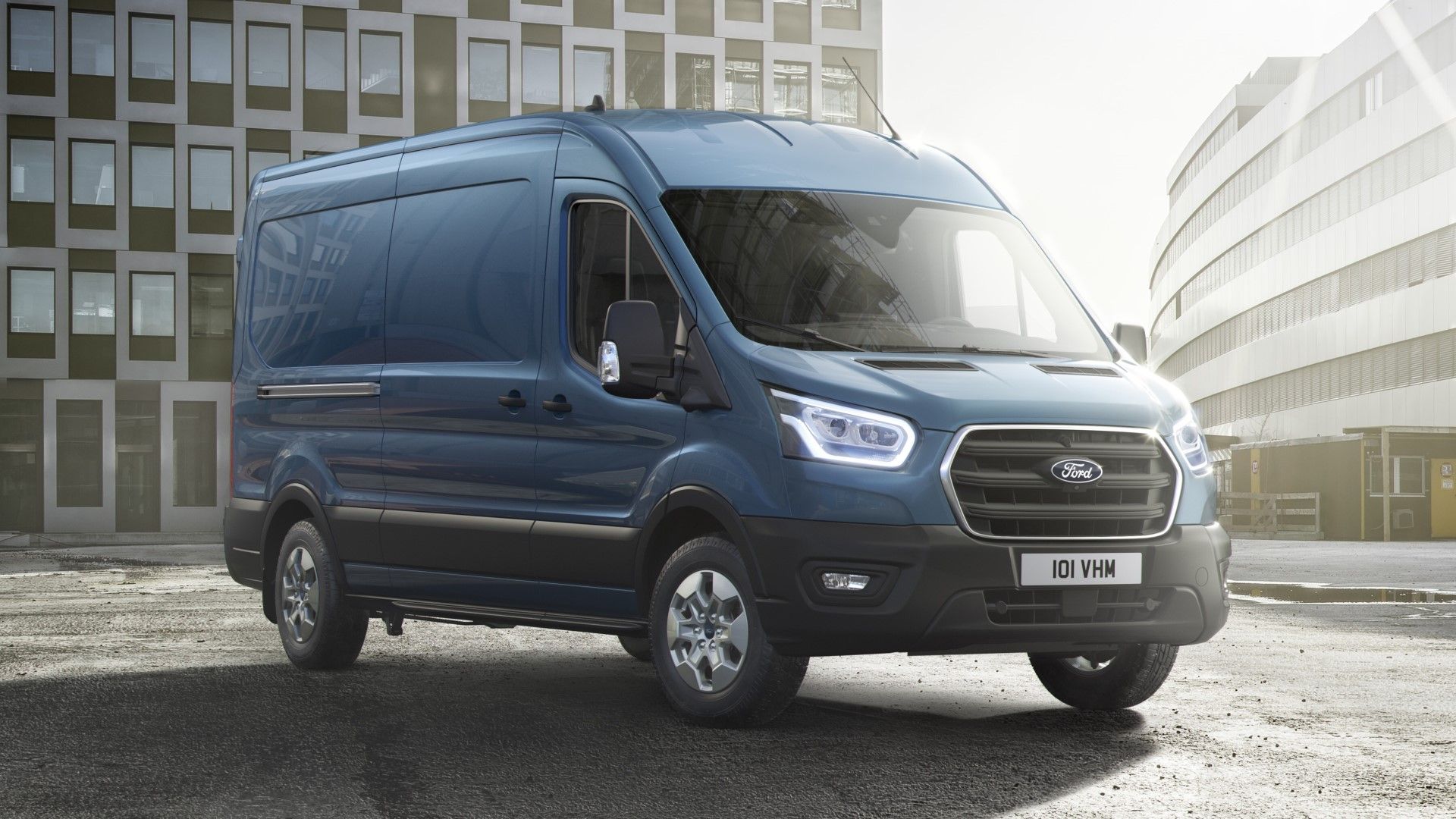
2024 Ford E-Transit: A Comprehensive Guide On Features, Specs, And Pricing
This is everything you need to know before purchasing a Ford E-Transit for your business.
Factors Influencing Ford’s EV Battery Pricing
The battery’s kWh capacity is a primary pricing determinant. Larger batteries that provide a longer range typically cost more. The use of advanced lithium-ion chemistry with higher energy densities and longer lifespans also makes Ford’s pricing a bit more expensive. Newer and more sophisticated EVs generally have costly batteries, so considering Ford’s current EV catalog is barely three years old, you can anticipate higher costs.
Main Factors In EV Battery Replacement Costs
- Larger batteries with higher kWh ratings in models like the E-Transit or the Mustang Mach-E or the F-150 Lightning typically cost more.
- Advanced technologies like lithium-ion and potential future solid-state batteries influence pricing.
- Different Ford EV models and production years have varying battery specifications, affecting replacement costs.
- The complexity of battery installation requires skilled labor, with costs varying by location and service provider.
- Warranty terms can offset replacement costs, with conditions varying across different Ford EV models.
- Broader economic elements, such as demand for EVs and the cost of raw materials for battery production, impact overall pricing.
Labor charges for installation are another factor that can significantly impact the repair cost. Replacing an EV’s battery is a time-consuming and complex process that requires skilled technicians, resulting in higher labor charges.
Warranty coverage can offset most expenses, and considering every Mustang Mach-E, E-Transit, and F-150 Lighting currently on the streets should be well within their warranty, you shouldn’t expect to pay for repairs or replacements at this time. Market factors like demand for EVs and raw material costs for battery production also impact the overall price of Ford’s EV batteries, just like it would any other manufacturer.
Ultimately, the battery capacity, labor time, and the specific chemistry used in the battery pack play a significant role in determining the price. Ford’s EV batteries range from 72 kWh to 131 kWh, which is in the realm of what other electric car companies are offering.
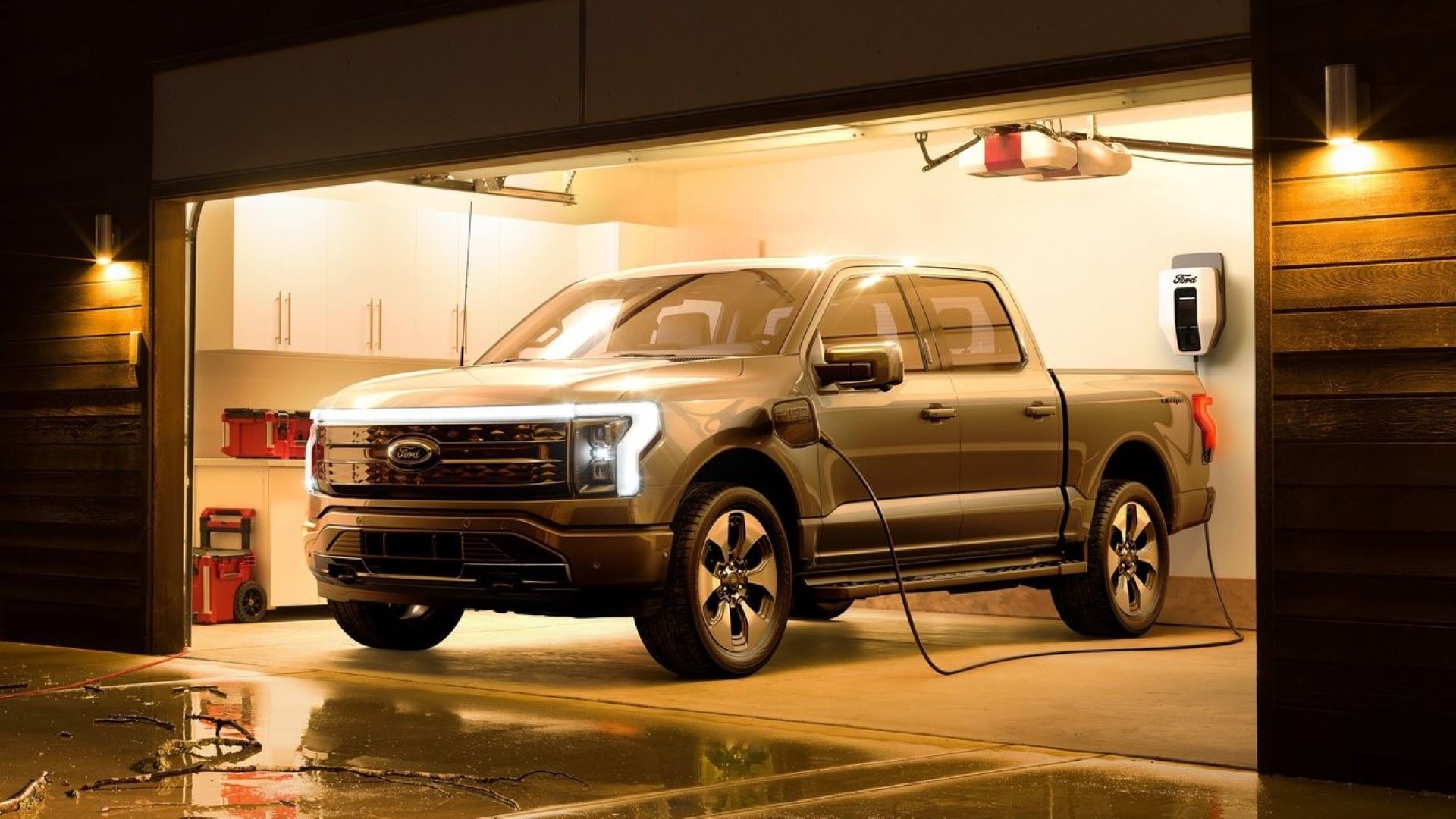
Here’s How Much It Costs To Charge A Ford EV
EVs run cheaper than their ICE counterparts, and here’s how much you’ll end up spending to charge a Ford electric vehicle.
Comparing Costs With Other EV Brands
As noted, replacing the battery on a Ford EV can range between $5,000 to $20,000. This is a very broad range because the base Mustang Mach-E, the E-Transit, and flagship Ford F-150 Lightning have vastly different battery capacities.
The base Tesla Model 3 features a smaller 60 kWh battery pack, which Tesla charges around $3,000 to $7,000 to replace. The Mercedes-Benz EQS sits at the higher end of battery capacity with its 107.8 kWh pack. Some customers were furious to discover that a replacement battery can set you back by up to $50,000. The Lucid Air range has very similar parts and labor charges as those from Mercedes.
Comparison Of Average Battery Replacement Cost Estimates
|
Manufacturer |
Price |
|
Ford |
$28,000 to $35,000 |
|
Mercedes-Benz |
$12,000 to $50,000 |
|
Lucid |
$40,000 to $50,000 |
|
Hyundai |
$5,500 to $7,000 |
|
Nissan |
$4,500 to $7,000 |
|
GMC |
$20,000 to $30,000 |
|
Tesla |
$3,000 to $20,000 |
(Specs sourced from various manufacturers and consumer forums)
The Nissan Leaf is a more established EV with a significantly smaller 40 kWh battery capacity, so you can expect to pay about $4,500 for parts and labor. The GMC Hummer EV has one of the biggest battery packs, measuring 200 kWh, but General Motors will charge around $20,000 to $30,000 for parts and labor.
Tesla Battery Replacement
For Tesla, the major competitor for Ford in the electric vehicle market, battery replacement costs depend on the car model and the condition of the battery pack.
Tesla acknowledges that these costs are high and aims to bring the 4680 battery to market as soon as possible. This new battery promises to be significantly cheaper to replace, with lower labor times and costs.
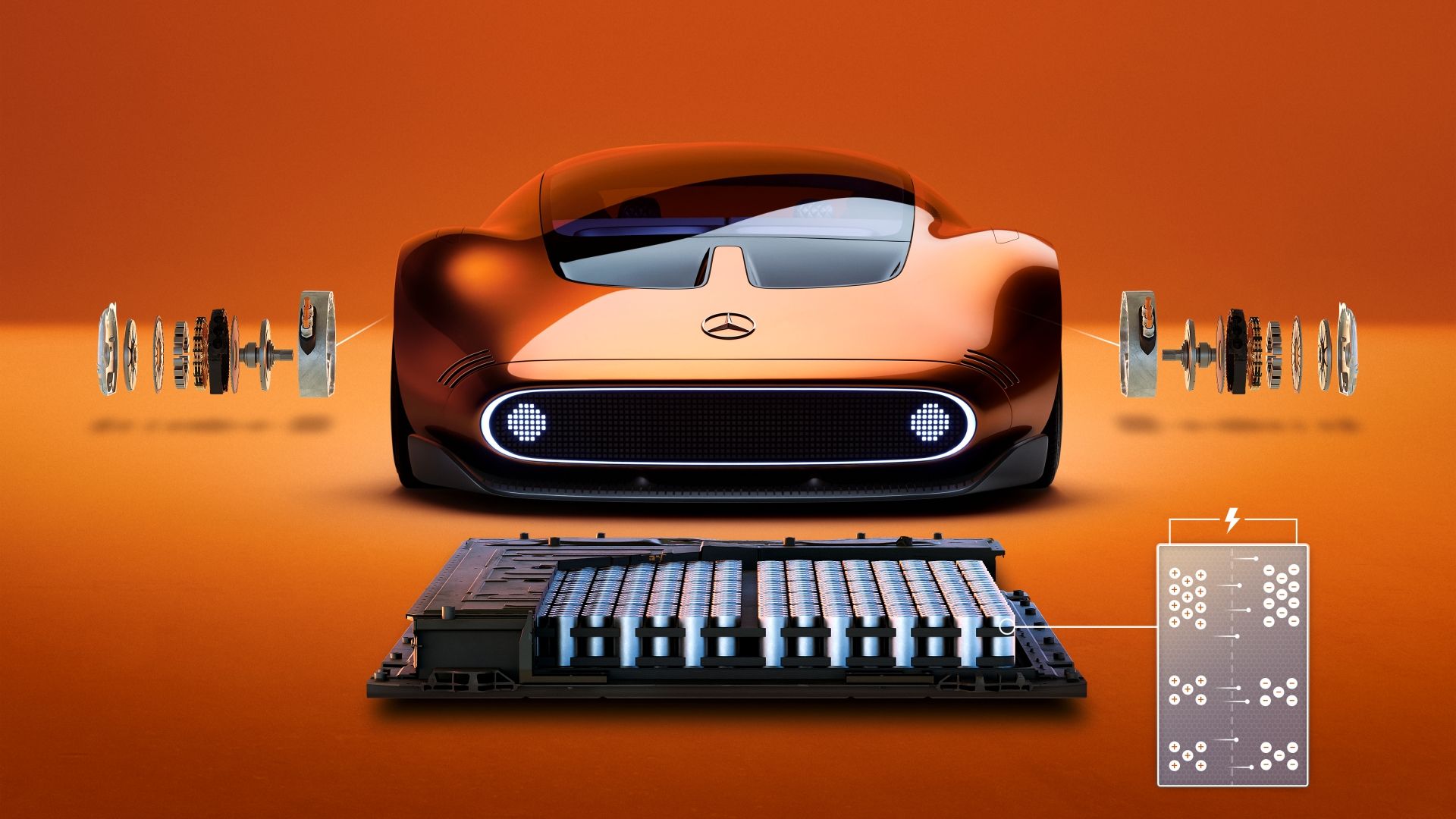
The Different Type Of Electric Car Batteries Explained
From lithium-ion lightning to solid-state serenity, electric car batteries power a silent revolution.
Extending The Lifespan Of Your Ford EV Battery
Just like any lithium-ion battery, the battery in your Ford electric vehicle (EV) will naturally degrade over time. This degradation is inevitable, but there are steps you can take to minimize it and extend the overall lifespan of your battery.
Thermal Management
Extreme temperatures, both hot and cold, can significantly impact battery health. When parked, try to keep your EV out of direct sunlight on hot days. The battery’s thermal management system will attempt to regulate its temperature, but this can drain the battery if it’s relying solely on battery power.
To avoid this, park in a garage or shaded area whenever possible. Alternatively, if your car is plugged in, the thermal management system can utilize grid power to maintain optimal battery temperature. Similarly, during cold snaps, parking in a garage or keeping your EV plugged in can help regulate battery temperature and prevent excessive drain.
Maintaining Optimal Charge Levels
While it might seem intuitive to keep your battery fully charged for maximum range, this can actually be detrimental in the long run. Just like letting the battery completely discharge below 20% (deep discharging), frequently charging to 100% can accelerate degradation. For optimal battery health, it’s recommended to maintain a charge level between 25- and 75-percent. This mid-range helps preserve battery capacity.
Charging Habits
While rapid charging stations offer undeniable convenience, frequent use can put a strain on your EV battery. The high-voltage DC current used in fast charging generates heat, which can accelerate degradation over time. Standard charging, on the other hand, is gentler on the battery and contributes to extended lifespan. Ideally, use rapid charging stations only when necessary and prioritize standard charging whenever possible. This is especially true in cold weather conditions where standard charging is even more beneficial for battery health.
Additional Tips for Battery Care
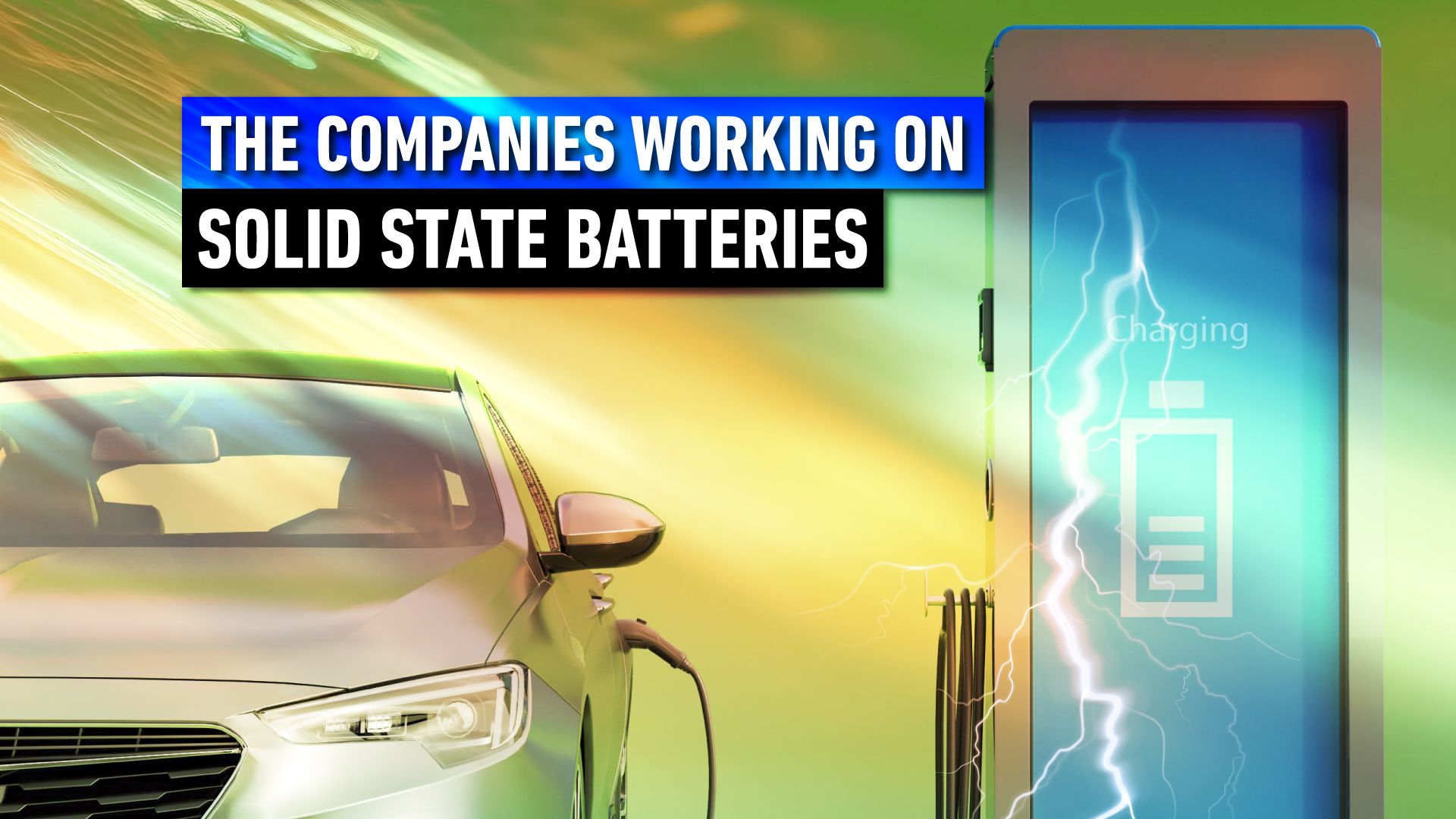
15 Companies Relentlessly Working On Solid State Batteries
By making EVs more practical and efficient, solid-state batteries will reshape the future of sustainable energy.
Ford And The Future Of EV Battery Replacement
A Multi-Pronged Approach
Ford is strategically addressing the future of EV battery replacement by focusing on several key areas: battery recycling, battery refurbishment, and new battery technology.
Sustainable Battery Lifecycle
Environmental responsibility is a major concern when considering the growth of the electric vehicle industry. To address this, Ford is actively working towards a more closed-loop battery lifecycle. This includes a partnership with Everledger, which utilizes blockchain technology to track and trace batteries in newer Ford EVs.
This partnership aims to streamline the recycling process when batteries reach the end of their usable life. Ford is also collaborating with US-based lithium-ion battery recyclers like Cirba Solutions and Li-Cycle. This focus on responsible battery recycling can significantly reduce the environmental impact of battery production and minimize the need for virgin materials in future batteries.
Beyond Lithium-Ion
Ford recognizes the potential of solid-state batteries to revolutionize electric vehicles and has committed significant resources to both their research and development, as well as future vehicle integration.
Through a joint venture with SK Innovation called BlueOvalSK, Ford is planning large-scale production of lithium-ion battery cells and array modules, with an estimated capacity of 60-gigawatt hours (GWh) annually by the mid-2020s. This partnership serves as a springboard for the potential transition to solid-state battery production later in the decade. Solid-state batteries offer several advantages over traditional lithium-ion batteries.
By focusing on both responsible battery management and next-generation battery technology, Ford is taking a multi-pronged approach to address the future of EV battery replacement. This strategy aims to not only minimize environmental impact but also enhance the overall ownership experience for future electric vehicle drivers.
[ad_2]
Source link


